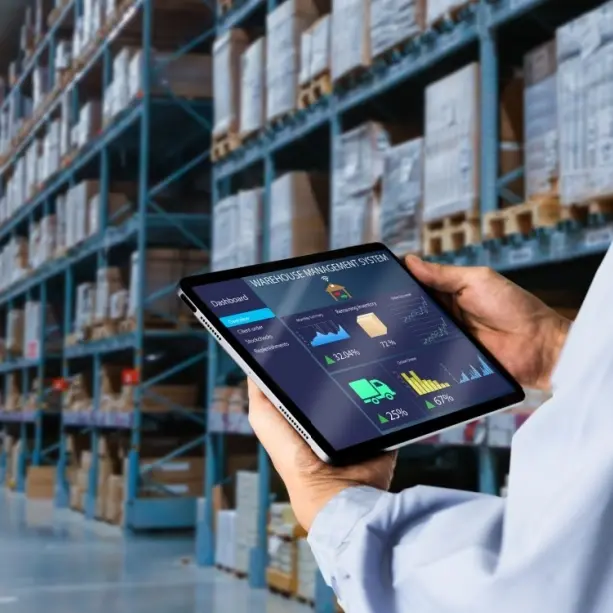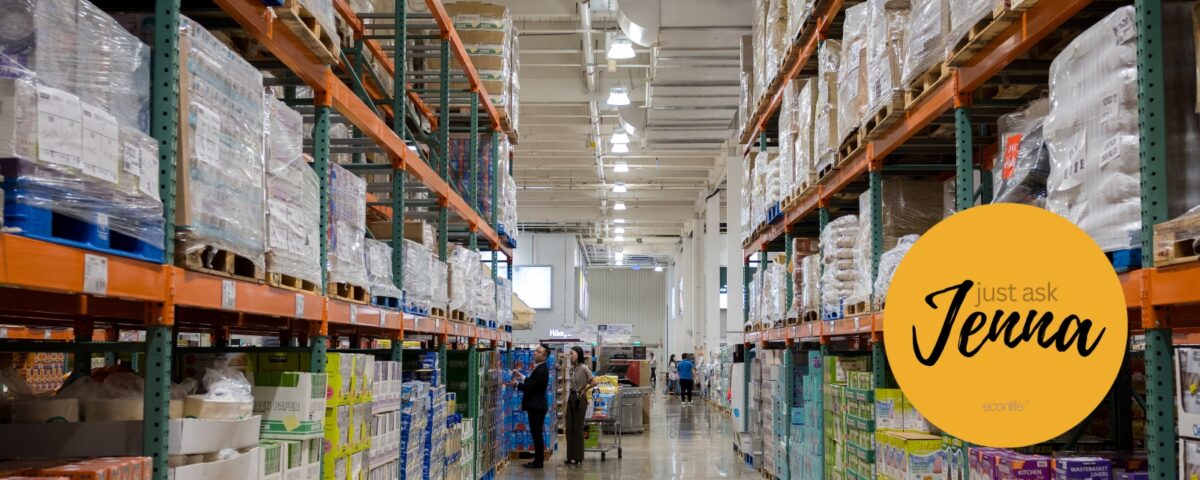Having supply chain visibility is important for successful logistics operations. Supply chains are incredibly complicated, composed of moving parts and unknown factors. Without visibility of end-to-end supply chain operations, it can be difficult to effectively manage your fleet. Fleet managers need data in order to make the best strategic decisions for the betterment of the company as a whole. Gaining this visibility, however, can seem like a daunting task. You probably have questions like “How much visibility do I need?” and “How do I even gain visibility?” We’ll be answering these questions and more in this blog, so keep reading to find out.
Increase Your ROI by Investing in AirFinder Everywhere
- Loss Prevention. Reduce the amount of loss that occurs during the supply chain process
- Location Coverage. AirFinder Everywhere uses a combination of GPS, Cellular, and WiFi to determine location everywhere
- Security Alerts. Know when a delay in shipment has occurred so the problem
can be addressed immediately.
Step One: Recognize The Need for Supply Chain Visibility
Before you can start gaining visibility, you need to recognize the importance of gaining real-time supply chain visibility. If you’re reading this blog, chances are you already recognize this importance. But for those of you who don’t fully understand, let’s briefly go over why this visibility is essential. Without supply chain visibility, you don’t know where your most valuable assets are. These include your trailers, pallets, cargo, and more. These items can easily get lost or become the target of theft, costing your company time and money and hurting the relationship you have with customers because of the delays. When you have visibility of your assets at all times, they can’t get lost to the point of needing replacements, merely temporarily misplaced. For example, if you need a pallet to load onto a trailer, and the one you need is not in the right place, you don’t have to hunt throughout the entire warehouse searching for it or even replace it if it doesn’t turn up. Instead, you can easily look up its current location through the use of supply chain visibility software. It will tell you where it is so you can retrieve it right away.
Supply chain visibility tools also help to prevent theft. With geofencing capabilities, companies can set up virtual boundaries around their warehouses and other important locations that will alert fleet managers of an asset crossing that boundary. If a particular trailer or pallet crosses the boundary when it shouldn’t be, an alert will be sent right away so immediate action can be taken. This doesn’t just help prevent theft, it helps prevent operational mistakes. Sometimes, when you’re having a busy day, a pallet can easily end up loaded onto an incorrect trailer. Instead of finding out hours or days after the mistake is made, the mistake is known before the asset leaves the facility, allowing you to correct it right away so that operations can continue on as normal.
If you are looking for a way to improve overall operations, supply chain visibility is a powerful tool for this use case as well. After all, it’s an incredibly competitive market, and you want to make sure you are the best of the best by tracking your process efficiencies and making continuous improvements. Supply chain management software that tracks and monitors your assets provides you insights to how optimized your operations are. This can show you your bottlenecks, asset utilization levels, and other areas that can be subject to improvement. You can use this information to make adjustments and make sure your operations are optimized. When you continually improve your operations, your customers will appreciate the effort you are putting into providing them with the best possible experience.
Step Two: Choose a Supply Chain Management System
Once you understand the importance of supply chain visibility, you can then search for the best tool to provide you with the visibility you need. Depending on how accurate you want the location information to be, how often you want updates, and other factors, there may be one solution that will work better for you than others. If you want to monitor environmental factors like acceleration, humidity, shock, or temperature along with location, you’ll need to choose a solution that does both. If you need high accuracy but don’t mind having a short battery life, a GPS solution is likely a good option for you. There are a lot of factors to consider and we’ve broken them down in this blog if you’d like to achieve a deeper understanding of your needs compared to common solution options. As for our offers, our supply chain management system, AirFinder Everywhere, is a customizable solution that has multiple technology options along with sensors to monitor asset condition beyond location. Since our solution isn’t one-size-fits-all, we are able to customize the solution to provide you the visibility and additional features you need to be successful. It is also able to integrate with existing telematics systems so you can have all of your data in one easy-to-access place.
Step Three: Integrate With AI
AI has proven itself to be a powerful tool in the world of logistics and supply chain management. AI is able to remove workload and human error from strategic decision-making. With the data collected from the supply chain management software, AI can make predictions based on historical data to make decisions surrounding purchasing or scheduling operations. As helpful as a tool like AI is, it is not intended to be used on its own. If you try to invest in AI to make decisions but don’t invest in supply chain management software first, you’re going to be frustrated and disappointed with the results you get. AI can only make decisions based on the data it has. If there is no data or the data is inconsistent or unreliable, you won’t get accurate results from the AI application. If you only want to invest in either supply chain management software or AI, I’d recommend the supply chain management system. The software collects the data you need and while you won’t have AI to make the decisions for you, you have the data you need to make accurate and strategic decisions. If you are able to, invest in both, but understand that you’ll need supply chain management software now if you ever want to invest in AI to increase automation in the future.
Step Four: Utilize The Data Collected
If you just collect the data and let it sit, you won’t see improvements or return on your supply chain management investment. The whole point of collecting the data is to use it so you can improve your supply chain; the system cannot make these process changes for you beyond offering visibility. Once the supply chain tracking system has been implemented, you’ll gain visibility of your supply chain operations. You’ll be able to see in real time where your assets are. You can then use this data to make adjustments as needed. You’ll get alerts of unauthorized movement of assets, reduce delays, and have the information you need to make improvements. Maybe you’ll notice there are five trailers on your lot that aren’t being used. You can either reallocate those to another location or adjust the scheduling to ensure all are being rotated through for optimal usage. The list of benefits you can get from this new visibility you’ve unlocked is long and getting longer every single day. As innovation continues, more uses of this data are being discovered, and as time using your system goes on, you uncover more and more capabilities with the same solution. You don’t need five different solutions to improve your supply chain – you just need one that can be expanded as needed. If at first you only use the solution to prevent loss and theft but a year later decide you need to optimize your workflows, you can use the same one and collect new data and create new reports with the information you need.
Will You Take The Proper Steps to Improve Supply Chain Visibility?
Achieving comprehensive supply chain visibility is crucial for the success of logistics operations. The complexity of modern supply chains, with numerous moving parts and potential uncertainties, makes visibility indispensable for effective management. Fleet managers should rely on accurate, real-time data to make informed strategic decisions that enhance the company’s overall performance. While gaining such visibility might initially seem expensive and difficult, it is a manageable and essential task that will prove its worth after just a few months of use. Recognizing the importance of visibility is the first step. Without it, companies risk losing track of valuable assets like trailers, pallets, and cargo, leading to costly replacements and damaging customer relationships due to delays. Supply chain management software prevents these issues by enabling managers to locate assets instantly and monitor their condition. Choosing the right supply chain management system is crucial. Depending on specific needs, different solutions offer various levels of accuracy and more. You have to choose the solution that will meet your needs. Integrating AI with these systems further enhances decision-making by leveraging historical data to predict and optimize future operations. However, AI’s effectiveness depends on the quality of the data collected by the supply chain management software. Thus, investing in robust data collection tools is paramount. Finally, the collected data must be actively utilized. Real-time insights into asset locations and conditions allow for immediate adjustments and strategic improvements. Continuous innovation in these technologies ensures that a single, adaptable system can evolve to meet expanding needs, providing long-term value and efficiency. By following these steps, companies can unlock the full potential of supply chain visibility, leading to superior operational performance and customer satisfaction. To learn more about gaining supply chain visibility and what our solution can do for you, book a demo with our team of experts.

Publisher: Source link











